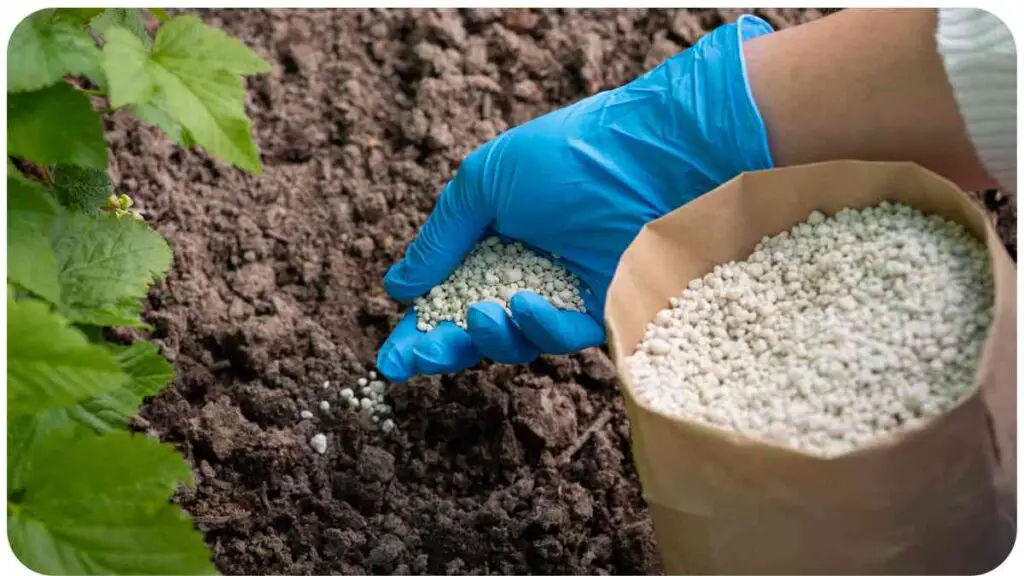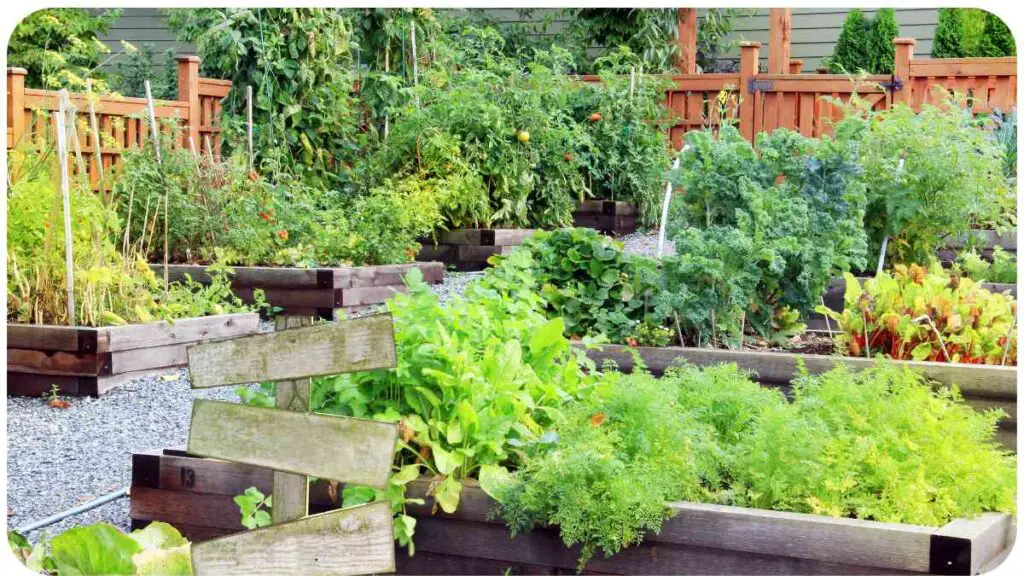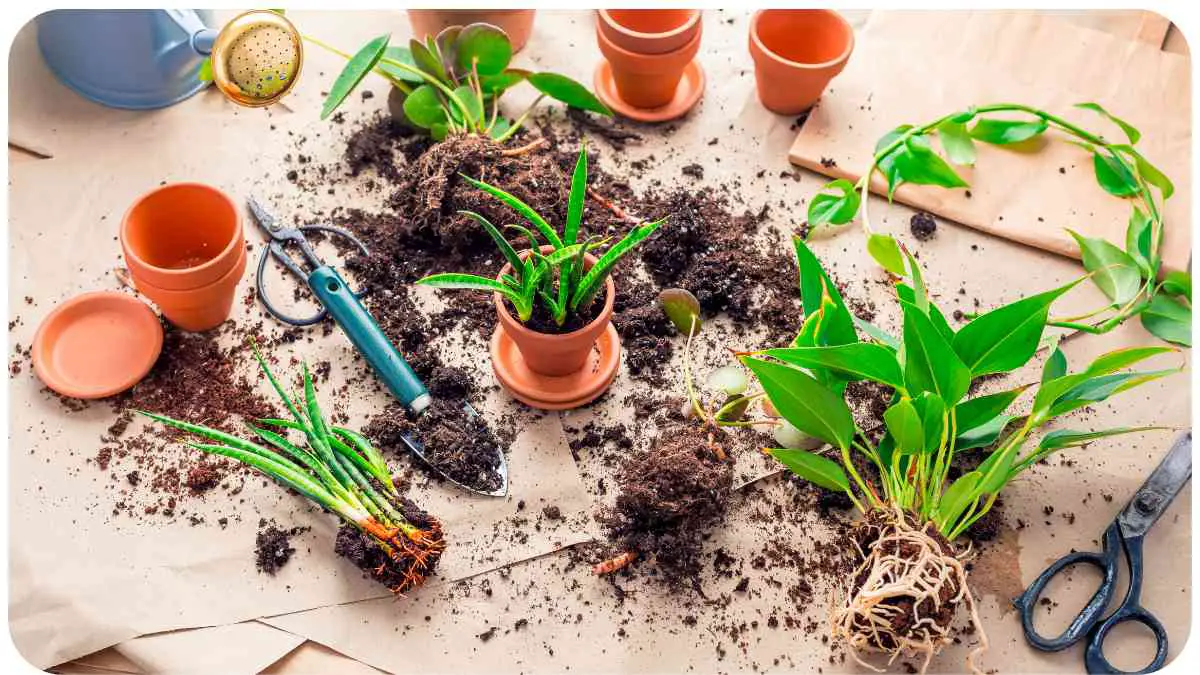Tropical house plants bring a touch of lush greenery and vibrancy into our homes, but to keep them thriving, proper care is essential. Fertilizing is a crucial aspect of plant care, providing essential nutrients for growth and vitality.
In this guide, we’ll delve into the best practices for fertilizing tropical house plants, ensuring they flourish in their indoor environment.
| Takeaways |
|---|
| 1. Fertilizing is crucial for the health and vitality of tropical house plants. |
| 2. Choose the right fertilizer type and formulation for your plants. |
| 3. Follow a regular fertilizing schedule based on seasonal needs. |
| 4. Monitor plant response and adjust fertilization practices accordingly. |
| 5. Avoid common mistakes such as overfertilizing or neglecting to flush the soil. |
| 6. Implement best practices for healthy growth, including proper watering and lighting. |
| 7. Consider expert tips and troubleshooting advice for optimal fertilization success. |
2. Understanding Tropical House Plants
Before diving into fertilization techniques, it’s important to understand the unique characteristics of tropical house plants. These plants originate from warm, humid environments and often have specific requirements regarding light, water, and nutrients. Understanding their native habitats helps in providing suitable growing conditions indoors.
Table: Characteristics of Tropical House Plants
| Characteristic | Description |
|---|---|
| Native Environment | Warm, humid climates with consistent rainfall |
| Light Requirements | Varied, ranging from bright indirect light to low light conditions |
| Watering Needs | Generally require regular watering, but overwatering can lead to root rot |
| Temperature Range | Thrive in temperatures between 65°F to 85°F (18°C to 29°C) |
| Soil Preferences | Well-draining, nutrient-rich soil with high organic matter content |
3. Importance of Fertilizing

Fertilizing is essential for tropical house plants because it replenishes nutrients in the soil, promoting healthy growth and vibrant foliage. In their native habitats, these plants have access to a constant supply of nutrients from decomposing organic matter. However, in indoor environments, the nutrients in potting soil can become depleted over time, necessitating regular fertilization.
Table: Key Nutrients for Tropical House Plants
| Nutrient | Function | Deficiency Symptoms |
|---|---|---|
| Nitrogen (N) | Essential for leaf and stem growth, as well as overall plant vigor | Yellowing of leaves, stunted growth |
| Phosphorus (P) | Promotes root development and flower/fruit production | Purple or dark-colored leaves, poor flowering |
| Potassium (K) | Aids in overall plant health, including disease resistance and stress tolerance | Weak stems, scorched leaf edges, poor fruit development |
| Calcium (Ca) | Strengthens cell walls, reducing the risk of diseases and disorders | Leaf tip burn, distorted growth |
| Magnesium (Mg) | Essential for chlorophyll production, crucial for photosynthesis | Yellowing between leaf veins (interveinal chlorosis) |
4. Types of Fertilizers for Tropical House Plants
When it comes to fertilizing tropical house plants, there are several types of fertilizers to choose from, each with its own advantages and application methods. Understanding the differences between these fertilizers can help you select the most suitable option for your plants’ needs.
Table: Types of Fertilizers for Tropical House Plants
| Fertilizer Type | Description | Application Method |
|---|---|---|
| Liquid Fertilizers | Concentrated nutrients dissolved in water, absorbed quickly by plant roots | Dilute in water and apply directly to soil during watering |
| Granular Fertilizers | Slow-release pellets or granules that gradually release nutrients over time | Sprinkle over soil surface and water thoroughly; reapply according to package instructions |
| Organic Fertilizers | Derived from natural sources such as compost, manure, or plant-based materials | Mix into soil or apply as a top dressing; decompose slowly, providing long-term nutrient benefits |
| Water-Soluble Fertilizers | Similar to liquid fertilizers but in a powdered form, quickly dissolves in water | Mix with water according to package instructions and apply directly to soil or foliage; ideal for regular feeding and foliar spraying |
| Controlled-Release Fertilizers | Coated pellets that release nutrients gradually over an extended period | Incorporate into potting mix or place on soil surface; provide continuous nutrient supply for several months |
5. Key Nutrients for Tropical House Plants

Understanding the essential nutrients for tropical house plants is crucial for maintaining their health and promoting optimal growth. Each nutrient plays a specific role in plant development, and deficiencies can lead to various symptoms that affect overall vitality.
Table: Key Nutrients for Tropical House Plants
| Nutrient | Function | Deficiency Symptoms |
|---|---|---|
| Nitrogen (N) | Essential for leaf and stem growth, as well as overall plant vigor | Yellowing of leaves, stunted growth |
| Phosphorus (P) | Promotes root development and flower/fruit production | Purple or dark-colored leaves, poor flowering |
| Potassium (K) | Aids in overall plant health, including disease resistance and stress tolerance | Weak stems, scorched leaf edges, poor fruit development |
| Calcium (Ca) | Strengthens cell walls, reducing the risk of diseases and disorders | Leaf tip burn, distorted growth |
| Magnesium (Mg) | Essential for chlorophyll production, crucial for photosynthesis | Yellowing between leaf veins (interveinal chlorosis) |
6. When to Fertilize
Timing is crucial when it comes to fertilizing tropical house plants. Understanding the appropriate timing ensures that plants receive the nutrients they need during their active growth periods, maximizing the benefits of fertilization while minimizing the risk of overfeeding.
Table: Recommended Fertilizing Schedule
| Season | Frequency | Notes |
|---|---|---|
| Spring | Once every 2-4 weeks | Start fertilizing as new growth begins; plants are entering active growth phase |
| Summer | Once every 2 weeks | Increase frequency during the growing season to support vigorous growth |
| Fall | Once every 4-6 weeks | Slow down fertilization as growth begins to taper off |
| Winter | Once every 6-8 weeks | Reduce frequency to allow plants to rest during the dormant period |
7. How to Fertilize
Proper application of fertilizer is key to ensuring that tropical house plants receive the nutrients they need without causing harm. Follow these steps for effective fertilization:
- Choose the Right Fertilizer: Select a fertilizer specifically formulated for tropical house plants, preferably balanced (e.g., 10-10-10 NPK ratio) or tailored to their specific needs.
- Dilute Liquid Fertilizers: If using liquid or water-soluble fertilizers, dilute them according to the manufacturer’s instructions. Over-concentration can lead to fertilizer burn.
- Water Before Fertilizing: Ensure the soil is moist before applying fertilizer. Watering beforehand helps prevent root damage and ensures even distribution of nutrients.
- Apply Fertilizer Directly: Pour the diluted fertilizer directly onto the soil around the base of the plant. Avoid getting fertilizer on the foliage, as it can cause leaf burn.
- Water Thoroughly: After applying fertilizer, water the plant thoroughly to help distribute the nutrients evenly throughout the soil.
- Avoid Overfertilizing: Stick to the recommended dosage and frequency to prevent overfertilization, which can lead to nutrient imbalances and plant stress.
- Monitor Plant Response: Keep an eye on your plants for any signs of nutrient deficiencies or excesses. Adjust fertilization practices accordingly based on plant health and growth.
By following these steps, you can ensure that your tropical house plants receive the right amount of nutrients to thrive indoors.
8. Fertilizing Techniques
Fertilizing tropical house plants requires attention to detail and proper technique to ensure optimal nutrient uptake and plant health. Here are some techniques to consider:
- Top-Dressing: Sprinkle granular or organic fertilizers on the soil surface around the plant’s base. Gently work the fertilizer into the top layer of soil with a small hand rake or fork, then water thoroughly.
- Liquid Application: Use a watering can or hose-end sprayer to apply liquid fertilizers directly to the soil. Pour the diluted fertilizer evenly around the plant, making sure to cover the entire root zone.
- Foliar Feeding: For a quick nutrient boost, spray a diluted liquid fertilizer solution onto the plant’s foliage. This method allows nutrients to be absorbed directly through the leaves.
- Deep Root Feeding: Use a specialized root feeder tool to inject liquid fertilizer directly into the soil near the plant’s root zone. This technique ensures nutrients reach the roots where they are most needed.
- Slow-Release Fertilizers: Incorporate controlled-release fertilizer pellets into the potting soil at the time of planting. These pellets gradually release nutrients over time, reducing the need for frequent fertilization.
- Flush Soil Regularly: Periodically leach excess salts and fertilizer residues from the soil by watering the plant thoroughly until water runs out of the drainage holes. This helps prevent salt buildup and nutrient imbalances.
- Rotate Fertilizers: Alternate between different types of fertilizers (e.g., liquid, granular, organic) to provide a balanced nutrient profile and prevent nutrient deficiencies.
By employing these fertilizing techniques, you can effectively nourish your tropical house plants and support their healthy growth and development.
9. Common Mistakes to Avoid
While fertilizing tropical house plants is essential for their health and growth, certain mistakes can hinder their development or even cause harm. Here are some common mistakes to avoid:
- Overfertilizing: Applying fertilizer too frequently or in excessive amounts can lead to nutrient buildup in the soil, causing root damage and leaf burn. Stick to the recommended dosage and frequency.
- Underfertilizing: Neglecting to fertilize your plants can result in nutrient deficiencies, leading to stunted growth, yellowing leaves, and poor flowering. Follow a regular fertilizing schedule to ensure plants receive adequate nutrients.
- Using the Wrong Fertilizer: Not all fertilizers are suitable for tropical house plants. Avoid using fertilizers designed for outdoor plants or those with high concentrations of certain nutrients that may be harmful to indoor plants.
- Ignoring Soil pH: Tropical house plants thrive in slightly acidic to neutral soil pH. Test the pH of your potting mix periodically and adjust it as needed using pH-adjusting fertilizers or amendments.
- Fertilizing Dry Soil: Applying fertilizer to dry soil can result in uneven distribution and reduced nutrient uptake by the plant. Always water your plants thoroughly before fertilizing to ensure proper nutrient absorption.
- Fertilizing During Dormancy: Refrain from fertilizing tropical house plants during their dormant period, typically in the winter months. Plants require fewer nutrients during this time, and fertilizing can disrupt their natural growth cycle.
- Neglecting to Flush Soil: Failure to flush the soil periodically to remove excess salts and fertilizer residues can lead to salt buildup, causing root damage and nutrient imbalances. Flush the soil with water regularly to prevent these issues.
By avoiding these common mistakes and adopting proper fertilizing practices, you can ensure the health and vitality of your tropical house plants.
10. Signs of Overfertilization

Identifying signs of overfertilization in tropical house plants is crucial for preventing nutrient toxicity and maintaining plant health. Here are some common symptoms to watch out for:
- Leaf Burn: The edges or tips of leaves may turn brown or become scorched, indicating an excess of salts or nutrients in the soil.
- Stunted Growth: Despite regular watering and adequate light, plants may exhibit slow or stunted growth if they are receiving too much fertilizer.
- Wilting: Overfertilization can disrupt the balance of water and nutrients within the plant, leading to wilting or drooping foliage.
- Leaf Yellowing: While nutrient deficiencies can also cause yellowing of leaves, excessive fertilizer can result in a similar symptom, often accompanied by dark green foliage.
- Root Damage: Over time, excess salts from fertilizer can accumulate in the soil, causing root burn and damage. Check for signs of root rot or discoloration in the root system.
- Flower Drop: Tropical house plants may drop flowers prematurely if they are subjected to high levels of fertilizer, particularly nitrogen.
- Soil pH Imbalance: Overfertilization can disrupt the pH balance of the soil, making it too acidic or alkaline for optimal plant growth.
If you observe any of these signs in your tropical house plants, take immediate action to correct the issue. Flush the soil with water to remove excess salts, and refrain from fertilizing until the plants show signs of recovery. Adjust your fertilizing practices to prevent future overfertilization and maintain a healthy balance of nutrients.
11. Best Practices for Healthy Growth
To ensure the healthy growth and vitality of your tropical house plants, follow these best practices for fertilizing:
- Use High-Quality Fertilizer: Invest in premium-quality fertilizers specifically formulated for tropical house plants. Look for balanced formulations with essential nutrients in appropriate ratios.
- Follow a Regular Schedule: Establish a consistent fertilizing schedule based on the plant’s growth cycle and seasonal needs. Avoid erratic fertilization, which can lead to nutrient imbalances.
- Monitor Plant Response: Pay attention to how your plants respond to fertilization. Adjust the dosage and frequency based on their growth rate, environmental conditions, and nutrient requirements.
- Water Wisely: Ensure proper watering practices to complement fertilization. Water your plants thoroughly before and after fertilizing to prevent root burn and facilitate nutrient absorption.
- Provide Adequate Light: Proper lighting is essential for healthy plant growth and nutrient utilization. Place your tropical house plants in locations with adequate natural or artificial light to optimize their photosynthetic processes.
- Maintain Optimal Temperature and Humidity: Tropical house plants thrive in warm, humid environments. Maintain indoor temperatures between 65°F to 85°F (18°C to 29°C) and humidity levels of 50% to 60% for optimal growth.
- Regularly Inspect Plants: Routinely inspect your plants for signs of nutrient deficiencies, pest infestations, or diseases. Promptly address any issues to prevent them from affecting plant health.
By following these best practices, you can create an ideal environment for your tropical house plants to thrive and flourish indoors.
12. Expert Tips for Fertilizing Success
For expert-level success in fertilizing your tropical house plants, consider the following tips from seasoned plant enthusiasts:
- Customize Fertilization: Tailor your fertilization regimen to meet the specific needs of each plant species. Some tropical plants may require higher or lower doses of certain nutrients.
- Observe Growth Patterns: Pay attention to the growth patterns of your plants throughout the year. Adjust fertilization frequency and potency to coincide with periods of active growth and dormancy.
- Experiment with Fertilizer Formulations: Try different types of fertilizers, including liquid, granular, and organic options, to determine which works best for your plants. Experiment with different NPK ratios to optimize growth and flowering.
- Supplement with Micronutrients: In addition to the primary macronutrients (nitrogen, phosphorus, potassium), consider supplementing your plants with micronutrients such as iron, manganese, and zinc to address specific deficiencies.
- Implement Foliar Feeding: Occasionally supplement soil fertilization with foliar feeding to provide an extra nutrient boost directly to the leaves. Use a diluted liquid fertilizer solution and spray it onto the foliage, ensuring thorough coverage.
- Rotate Fertilizers Annually: To prevent nutrient buildup in the soil and maintain balanced soil fertility, rotate between different types of fertilizers annually. This prevents plants from becoming dependent on a single nutrient source.
- Test Soil Regularly: Conduct soil tests periodically to assess nutrient levels, pH, and overall soil health. Adjust your fertilization strategy based on the test results to ensure optimal plant nutrition.
By incorporating these expert tips into your fertilizing routine, you can elevate your tropical house plant care to the next level and achieve outstanding growth and vitality.
13. Troubleshooting Guide
Even with the best intentions, issues may arise when fertilizing tropical house plants. Here’s a troubleshooting guide to help you address common problems:
- Yellowing Leaves: If your plant’s leaves are turning yellow, it could indicate a nutrient deficiency (e.g., nitrogen, iron) or overfertilization. Adjust fertilization practices accordingly and consider supplementing with specific nutrients as needed.
- Stunted Growth: Slow or stunted growth may result from inadequate fertilization, poor soil quality, or environmental factors. Review your fertilizing schedule, ensure proper watering, and provide optimal growing conditions to encourage healthy growth.
- Leaf Burn: Brown or scorched leaf edges are a sign of fertilizer burn, typically caused by overfertilization or direct contact with concentrated fertilizer. Flush the soil with water to remove excess salts and adjust your fertilization practices.
- Wilting: Wilting foliage may indicate underwatering, overwatering, or root damage caused by fertilizer toxicity. Check soil moisture levels and drainage, and adjust watering frequency and fertilization accordingly.
- Poor Flowering: If your plant fails to produce flowers or blooms sporadically, it may be lacking essential nutrients such as phosphorus or potassium. Adjust your fertilization regimen to promote flowering and consider supplementing with bloom-boosting fertilizers.
- Pests and Diseases: Weak or stressed plants are more susceptible to pest infestations and diseases. Ensure proper fertilization, watering, and maintenance practices to bolster plant health and resilience against pests and pathogens.
- Soil pH Imbalance: If soil pH is too acidic or alkaline, it can affect nutrient availability and plant growth. Test the soil pH and amend it using pH-adjusting fertilizers or organic amendments to restore balance.
By identifying and addressing these common issues promptly, you can prevent further damage to your tropical house plants and promote their overall health and vitality.
14. Conclusion
Fertilizing tropical house plants is a critical aspect of indoor plant care, ensuring they receive essential nutrients for healthy growth and vibrant foliage. By understanding the unique needs of tropical plants and implementing proper fertilization practices, you can create an optimal environment for them to thrive indoors.
In this comprehensive guide, we’ve covered everything you need to know about fertilizing tropical house plants, including the importance of fertilization, types of fertilizers, key nutrients, fertilizing techniques, common mistakes to avoid, signs of overfertilization, best practices for healthy growth, expert tips, and troubleshooting advice.
Remember to tailor your fertilization regimen to meet the specific needs of your plants, adjusting dosage, frequency, and fertilizer formulations as needed. Regular monitoring, proper watering, and providing optimal growing conditions are essential for maintaining plant health and preventing nutrient deficiencies or excesses.
With the right knowledge and care, you can enjoy lush, thriving tropical house plants that bring beauty and vitality to your indoor space year-round.
Further Reading
Here are some additional resources to explore for more information on fertilizing tropical house plants:
- Planta: Fertilizing Tropical House Plants: This article provides detailed guidance on fertilizing tropical house plants, including recommended fertilizers and techniques for optimal growth.
- Real Simple: How to Fertilize Houseplants: Real Simple offers practical tips and advice on fertilizing indoor plants, including common mistakes to avoid and troubleshooting tips.
- Joy Us Garden: Fertilizing Indoor Plants: Joy Us Garden shares expert insights on fertilizing indoor plants, covering topics such as fertilization schedules, types of fertilizers, and best practices for healthy growth.
FAQs
How often should I fertilize my tropical house plants?
Fertilization frequency depends on factors such as plant species, growth rate, and environmental conditions. As a general rule, fertilize tropical house plants every 2-4 weeks during the growing season, reducing frequency during the dormant period.
What type of fertilizer is best for tropical house plants?
Liquid fertilizers or water-soluble fertilizers are often preferred for tropical house plants due to their quick absorption by the roots. Choose a balanced fertilizer with essential nutrients such as nitrogen, phosphorus, and potassium.
Can I use outdoor plant fertilizer for my indoor tropical plants?
While outdoor plant fertilizers may contain similar nutrients, they are often formulated differently and may not be suitable for indoor use. It’s best to use fertilizers specifically designed for indoor plants to avoid potential issues.
How do I know if my tropical house plants are getting enough nutrients?
Monitor your plants for signs of nutrient deficiencies, such as yellowing leaves, stunted growth, or poor flowering. Adjust your fertilization regimen accordingly to ensure plants receive the nutrients they need.
Is foliar feeding recommended for tropical house plants?
Foliar feeding can provide a quick nutrient boost for tropical house plants, especially during periods of rapid growth or flowering. Use a diluted liquid fertilizer solution and spray it onto the foliage, ensuring thorough coverage for best results.

For 15 years, Hellen James has worked in the gardening industry as an expert and landscape designer. During her career, she has worked for a variety of businesses that specialize in landscaping and gardening from small firms to large corporations.

